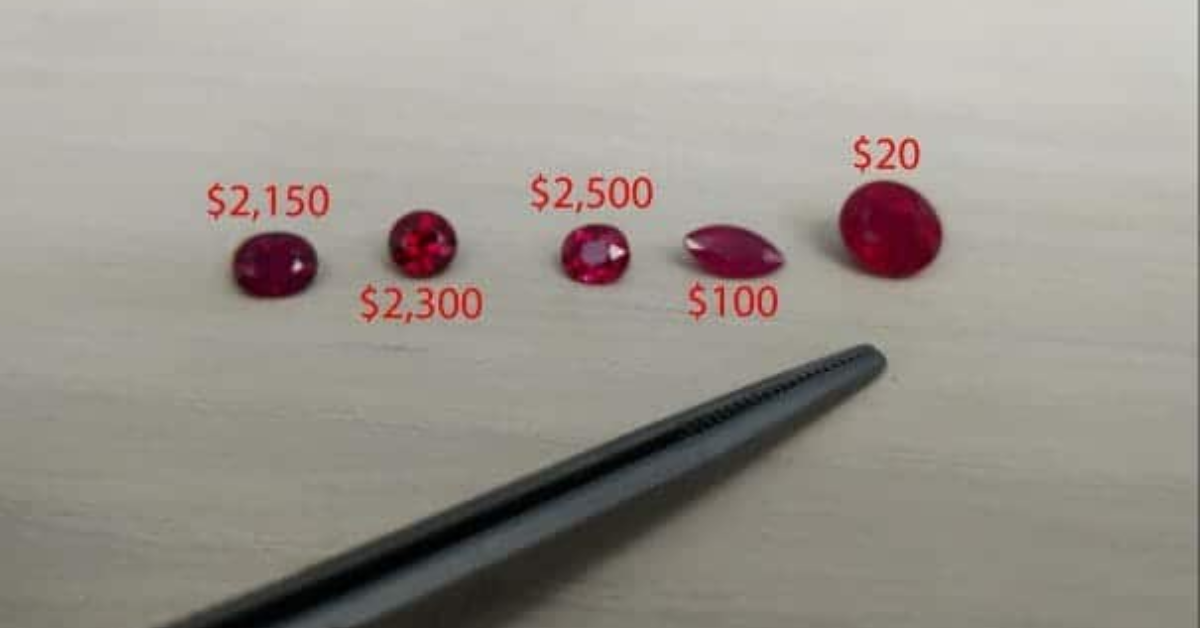When it comes to gemstones, rubies are among the most prized and sought-after due to their stunning color and rarity. The value of a ruby can vary significantly based on several factors, including its size, color, clarity, cut, and origin. In this article, we will explore these factors in detail, providing a comprehensive understanding of how much a ruby is worth in today’s market.
Factors Affecting the Value of Rubies
1. Color
The most critical factor in determining a ruby’s value is its color. The ideal ruby color is a vivid red, often referred to as “pigeon blood.” Rubies can also come in shades of pink and darker red. The more vibrant the red, the higher the value. Color is graded based on three characteristics:
- Hue: The primary color of the ruby.
- Tone: The lightness or darkness of the color.
- Saturation: The intensity or purity of the color.
2. Size
The size of a ruby, measured in carats, also significantly impacts its value. Larger rubies are rare, and as such, they command higher prices. Rubies above 1 carat typically see a dramatic increase in price per carat. For instance, a 5-carat ruby is not just five times more valuable than a 1-carat ruby; it could be worth ten times more, depending on its quality.
3. Clarity
Like diamonds, rubies are graded for clarity, which refers to the presence of inclusions or blemishes. The fewer inclusions a ruby has, the more valuable it is. However, unlike diamonds, some inclusions in rubies can be acceptable and may not significantly affect the value. The clarity scale includes:
- Flawless: No inclusions visible under 10x magnification.
- Very Slightly Included (VSI): Minor inclusions that are difficult to see.
- Slightly Included (SI): Inclusions that are visible without magnification.
- Included (I): Inclusions that are easily visible and affect transparency.
4. Cut
The cut of a ruby refers to how well it has been shaped and faceted. A well-cut ruby will reflect light beautifully, enhancing its color and brilliance. The cut impacts not just aesthetics but also the value. Common cuts for rubies include oval, round, and cushion shapes, with each having a different appeal and pricing structure.
5. Origin
The origin of a ruby can greatly influence its price. Rubies from Myanmar (formerly Burma) are highly regarded and often considered the best quality. Other notable sources include Thailand, Sri Lanka, and Africa. Rubies from specific regions can command higher prices due to their perceived quality and historical significance.
Market Trends and Pricing
The market for rubies can fluctuate based on supply and demand, economic factors, and trends in the jewelry industry. In recent years, the demand for high-quality rubies has increased, particularly from markets in Asia.
As of 2023, the price of rubies ranges significantly. Here’s a general guideline:
- Low Quality (1-2 carats): $200 to $1,000 per carat
- Mid Quality (2-5 carats): $1,000 to $5,000 per carat
- High Quality (over 5 carats): $5,000 to $15,000+ per carat
Exceptional rubies can fetch prices even higher, especially if they are of significant size and perfect color and clarity.
